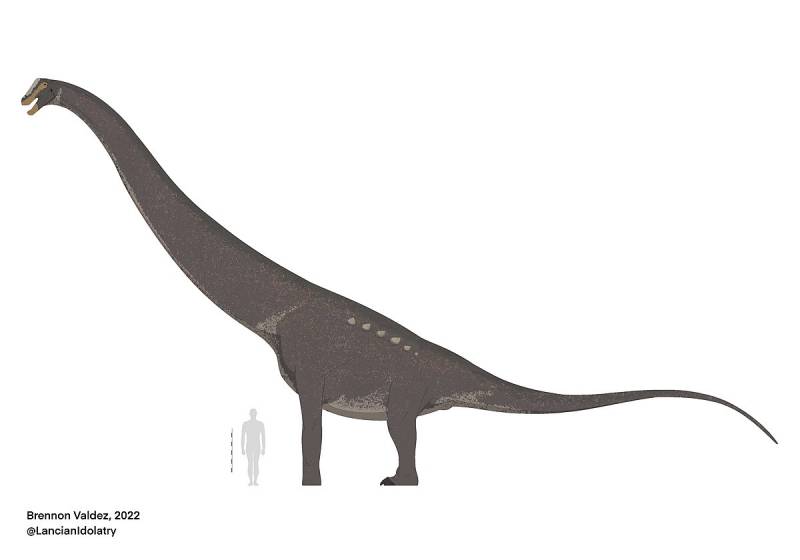Date Published: 04/09/2024
Scientists discover new species of mega dinosaur in Spain
ARCHIVED ARTICLE -
A 20-metre-long giant with a unique neck structure found in the province of Cuenca
Paleontologists in
Spain have identified a new species of titanosaur, named
Qunkasaura pintiquiniestra, from skeletal remains discovered at the Lo Hueco site in Fuentes, Cuenca.
This colossal dinosaur, which lived around 70 million years ago during the late Cretaceous period, had an impressive length of up to 20 metres, largely due to its extraordinarily long neck, and weighed more than 15 tonnes.
The discovery, published in the journal Communications Biology, represents a significant addition to our understanding of the diversity of dinosaurs that once roamed the Iberian Peninsula.
The name Qunkasaura pintiquiniestra is a nod to the region and its cultural heritage. ‘Qunka’ refers to Cuenca, the province where the remains were found, while ‘Saura’ honours Antonio Saura, a renowned Spanish painter from the region. The term ‘pintiquiniestra’ is inspired by a character from a Greek novel mentioned in Cervantes’ ‘Don Quixote’, reflecting the intersection of science and culture in this discovery.
A site rich in paleontological treasure
The Lo Hueco site, where Qunkasaura’s remains were unearthed, has been a focal point for paleontological research since its discovery in 2007. The site was uncovered accidentally during construction work on the Madrid-Levante high-speed railway, revealing a treasure trove of fossils.
Over the years, it has yielded numerous significant discoveries, contributing to our knowledge of ancient life, including advances in the evolutionary biology of crocodiles and turtles, as well as other titanosaurs.
Francisco Ortega, a palaeontologist at the National University of Distance Education (UNED) and one of the lead authors of the study, explained that the remains of Qunkasaura pintiquiniestra were found among many other bones in a sedimentary layer.
This layer has provided a rich context for understanding the environment and ecosystems in which these dinosaurs lived. Ortega noted that Qunkasaura stood out due to its unique skeletal features, such as rounded bony protrusions on the neck vertebrae and a hooked structure at the top of the base of the spine.
These distinctive characteristics set it apart from other known species, suggesting it was a previously unclassified dinosaur.
The detailed analysis of Qunkasaura’s bones compared to those of other titanosaurs found across Europe has led researchers to place it within a specific group of dinosaurs known as ‘opisthocoelicaudine saltasaurids’. This group is believed to have originated from Laurasia, an ancient supercontinent that eventually split into what we now know as Asia, Europe, and North America. The discovery of Qunkasaura in Spain provides new insights into the migration and evolution of these giant creatures.
What makes this discovery particularly important is its implications for understanding the changes in dinosaur fauna leading up to the great extinction event at the end of the Cretaceous, approximately 66 million years ago. Ortega emphasised that studying these late-surviving dinosaurs offers crucial clues about how ecosystems were structured and how these massive animals interacted with their environment before their eventual extinction.
The Lo Hueco site continues to be a promising location for future discoveries. Ortega mentioned that there are indications of additional specimens of Qunkasaura pintiquiniestra within the site, and potentially even another specimen, which could provide further insights into the biology and ecology of these remarkable dinosaurs. Each new find contributes to a more complete picture of the titanosaur family and their role as some of the last giants to inhabit our planet before the end of the dinosaur era.
Image: LancianIdolatry / Wikimedia commons
article_detail

|










